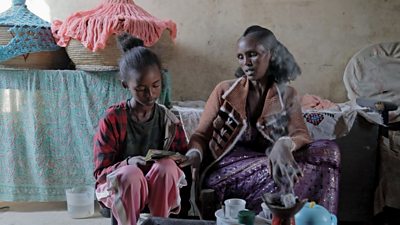Like many others in her community in Tigray, Guemesh Fishale used what she believed to be an empty mortar shell to grind coffee.
Initially, she dismissed the concerns of her daughter Hewan, who had learned at her school the dangers of explosive ordnance (EO) – and how everyday objects could be lethal.
Said Hewan: “They taught us not to throw, not to burn, and to report if we find someone using an EO to grind coffee.
Hewan saw one of the community focal point teams passing by her house and she reported her mother to them, asking them to help her understand the risks of using an EO shell.
Guemesh said she was told by her daughter that the EO was a dangerous explosive which could also cause cancer, to which the CFP team said: “Your daughter is right.”
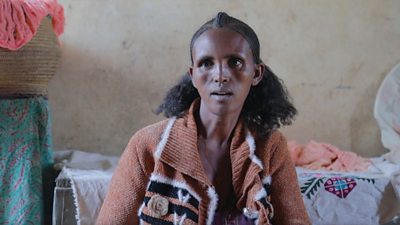
Reducing the risks
Hewan’s school was part of a United Nations Mine Action Service (UNMAS) project, in which ��ѿ��ý Media Action is a partner, to help conflict-affected communities in Ethiopia to understand how to reduce the risks of explosive hazards.
Around the world, mines, explosive remnants of war, and improvised explosive devices continue to cause fatalities and injuries, especially in situations of armed conflict, with many children among the victims, according to the United Nations.
As the use of improvised explosive devices in conflict has expanded, they pose even greater risk to civilians and humanitarian workers.
This project is helping humanitarians safely deliver essential services, while ensuring civilians can access basic services and continue to earn a living in areas affected by explosive ordnance.
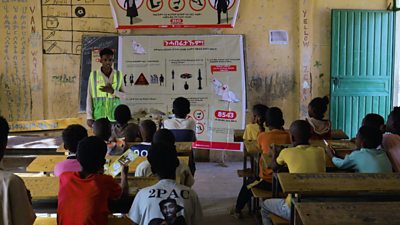
Reaching thousands
Focused on the Afar and Tigray regions in northern Ethiopia, we’ve supported risk awareness campaigns reaching 31,983 people, and supported the distribution of 80,433 banners, leaflets, and posters that help increase awareness and inspire individuals to use the toll-free centre for assistance.
Public service announcements produced in Afaric, Amharic, and Tigrigna, aired on Ethiopia and Amhara Broadcasting Corporations, and work with community focal points supported further training and mass awareness, as well as recording explosive ordnance locations and taking pictures in each woreda.
The campaign has changed people's attitudes and helped raise awareness about their dangers.
Kapital, a schoolboy in Tigray, joined friends in collecting and selling explosive ordnance left following conflict in the region. Through this project, they learned about different kinds of explosive ordnance; to avoid stepping on them or burning them, and to avoid throwing stones or touching them.
Now, Kapital said: “I teach children younger than me not to touch different EOs, because they are dangerous.”
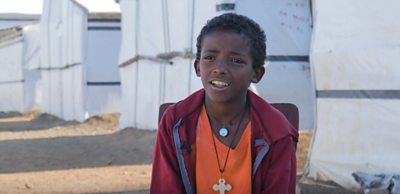
A shepherd in Afar, named Mohamed Ahmed, said he previously knew nothing about explosives, except that he knew people had been hurt by explosions in the past.
Through the project, he learned what kind of places explosive ordnance can be found, such as military camps, forts, checkpoints, roadsides and bridges.
He was taught what to do if he finds explosive ordnance - the number to call and how to immediately inform the Kebele leaders or security personnel.
“I have shared my knowledge to various schools and community groups in collaboration with the Kebele Administration,” Mohamed said.
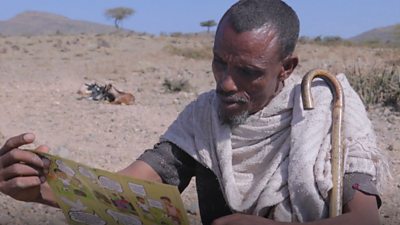
Our mine awareness work is funded by .
